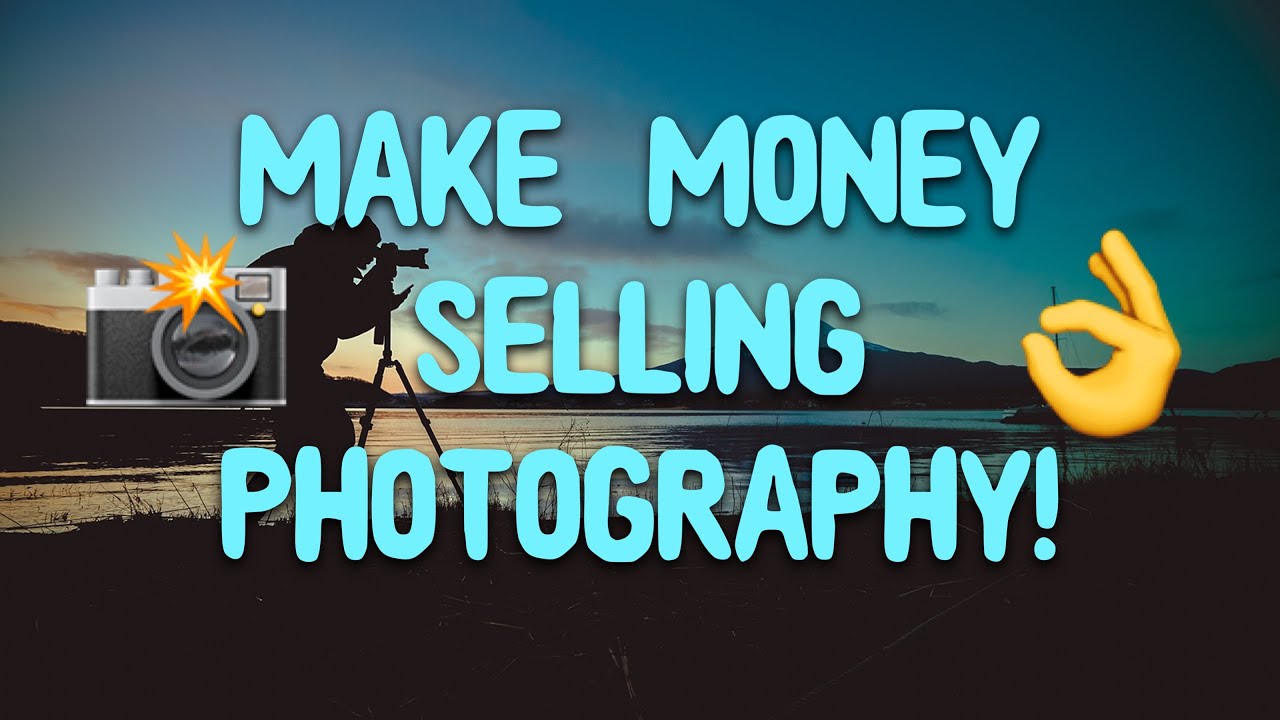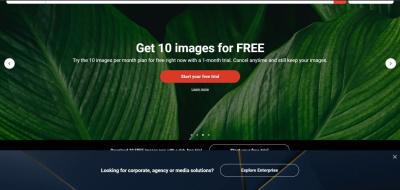Are you curious about turning your photography or design skills into a steady income? Shutterstock is one of the most popular platforms for creative folks to showcase their work and earn money. Whether you’re a professional photographer or an enthusiastic hobbyist, Shutterstock offers a straightforward way to monetize your images, videos, and illustrations. But just how easy is it to start earning? Let’s explore what it takes to make money on
Understanding Shutterstock’s Contributor Program

Shutterstock‘s contributor program is designed to make it simple for creators to upload their work and earn royalties whenever someone downloads their content. Here’s a quick overview of how it works:
- Sign Up and Create an Account: It’s free to join. Just fill out some basic info and agree to the contributor terms.
- Upload Your Content: You can upload photos, videos, vectors, or illustrations. Make sure your content meets Shutterstock’s quality standards and conforms to their submission guidelines.
- Add Descriptions and Tags: Properly tagging your work helps buyers find it. Use relevant keywords and descriptive titles to maximize visibility.
- Approval Process: Once uploaded, your work goes through an approval process. Shutterstock reviews submissions to ensure quality and compliance. This can take anywhere from a few hours to several days.
- Earn Royalties: When someone downloads your content, you earn a royalty. The amount depends on your contributor level and the type of content. Typically, royalties range from 15% to 40% of the sale price.
- Get Paid: Shutterstock offers payments via PayPal or bank transfer once you reach the minimum payout threshold, usually $35.
One of the reasons many find Shutterstock appealing is its straightforward approach. You upload your work, optimize it with good keywords, and wait for sales. As you build a portfolio, your potential for earning increases. Plus, Shutterstock provides helpful resources and tips to improve your submissions and maximize your earnings. Overall, while it takes some effort to create and upload quality content, the process itself is quite user-friendly, making it accessible even for newcomers to stock photography and digital assets.
Steps to Get Started with Selling Photos and Videos

Getting your feet wet in selling photos and videos on Shutterstock isn’t as complicated as you might think. It’s a straightforward process, especially if you break it down into manageable steps. Let’s walk through what you need to do to start earning money with your creative content.
Step 1: Sign Up as a Contributor
The first thing you’ll want to do is create a contributor account on Shutterstock. Simply go to their website and fill out the registration form. You’ll need to provide some basic info, like your name, email, and a password. After that, you’ll need to agree to their contributor terms and verify your email address.
Step 2: Understand the Submission Guidelines
Before uploading anything, take some time to review Shutterstock’s content guidelines. They specify what types of images and videos are acceptable, technical requirements, and quality standards. Familiarizing yourself with these rules upfront will save you from rejections and frustration later on.
Step 3: Prepare Your Content
Now comes the fun part—gathering and preparing your photos and videos. Make sure your files are high resolution, well-lit, and free of noise or blurriness. For videos, ensure smooth editing, good sound quality, and proper framing. Editing tools like Lightroom, Photoshop, or free options like GIMP can help enhance your images before submission.
Step 4: Upload Your Content
Once your content is ready, log into your contributor dashboard and start uploading. You’ll be prompted to add titles, descriptions, keywords, and categories—these are crucial for making your content discoverable. Use relevant keywords to increase your chances of sales.
Step 5: Submit and Wait for Review
After uploading, your content will go through a review process where Shutterstock’s team ensures it meets their quality and guideline standards. This can take a few days. If your content is approved, it’ll be available for sale on the platform. If not, you’ll receive feedback on what to improve.
Step 6: Track Your Earnings and Optimize
Once your content is live, monitor your sales through the contributor dashboard. Pay attention to what types of images and videos perform best, and consider creating more content in those niches. Over time, optimizing your portfolio can help you earn more and grow your presence on Shutterstock.
Tips for Creating High-Quality and Marketable Content

Creating content that sells isn’t just about snapping a picture or filming a video—it’s about making sure what you produce appeals to buyers and stands out from the crowd. Here are some practical tips to help you craft high-quality, marketable content that increases your chances of making sales on Shutterstock.
Focus on Technical Quality
- Sharpness and Clarity: Always use a good camera and ensure your images and videos are in focus. Blurry or pixelated content won’t pass review or attract buyers.
- Proper Lighting: Natural light works wonders, but if you’re indoors, use soft, even lighting to avoid harsh shadows. Good lighting makes your content look professional.
- Correct Exposure: Avoid overexposed or underexposed shots. Adjust brightness and contrast to get a balanced look.
Composition Matters
- Rule of Thirds: Place your main subject off-center for a more engaging shot.
- Backgrounds: Keep backgrounds simple or relevant to your subject. Cluttered backgrounds can distract viewers.
- Steady Shots: Use tripods or stabilizers for videos to avoid shaky footage.
Create Content with Market Demand in Mind
Research popular trends and themes on Shutterstock—like remote work, health, technology, or lifestyle. Producing content that aligns with current demand increases your chances of sales. Use relevant keywords and titles to target these niches effectively.
Be Authentic and Unique
While it’s good to cover popular topics, adding your unique perspective can make your content stand out. Authenticity resonates with buyers looking for genuine, relatable visuals.
Pay Attention to Details
- Model Releases: If your content features recognizable people, ensure you have proper model releases.
- Property Releases: For private property or branded items, get the necessary permissions.
- Consistency: Regularly upload new content to keep your portfolio fresh and increase your visibility.
By following these tips, you’ll be well on your way to creating content that not only meets Shutterstock’s standards but also appeals to a broad audience. Remember, quality and relevance are your best friends when it comes to making money on stock platforms!
Factors That Influence Your Earning Potential on Shutterstock
When it comes to making money on Shutterstock, there’s no one-size-fits-all answer. Your earnings can vary widely depending on a bunch of different factors. Let’s break down some of the key elements that can influence how much you can earn as a contributor.
Quality of Your Content
First and foremost, the quality of your photos, illustrations, or videos plays a huge role. High-quality, technically sound, and visually appealing assets tend to perform better and attract more buyers. Shutterstock’s algorithm favors content that’s sharp, well-lit, and properly composed. So, investing time in learning photography or design basics can really pay off.
Consistency and Volume
Uploading regularly and building a sizable portfolio helps increase your chances of making sales. The more assets you have, the higher the chances that someone will find and purchase your work. Think of your portfolio like a store—more options attract more customers.
Relevance and Trends
Staying on top of current trends and creating content that matches what buyers are searching for can boost your earnings. For example, if eco-friendly themes are trending, producing related images can help you capture that market.
Keyword Optimization
Properly tagging and describing your assets with relevant keywords helps people find your work. The better your keywords align with what buyers are searching for, the more likely your content will be viewed and purchased.
Exclusive vs. Non-Exclusive Content
Shutterstock offers the option to be exclusive or non-exclusive. Exclusive contributors often earn higher royalty rates, but they can only sell their content on Shutterstock. Non-exclusive contributors can sell elsewhere, but their royalties might be lower. Choosing the right approach depends on your goals and how much you want to diversify your income streams.
Personal Branding and Marketing
Promoting your portfolio outside of Shutterstock—like on social media or your website—can also bring more traffic to your content. The more eyes on your work, the higher your chances of making sales and increasing your earnings.
Common Challenges and How to Overcome Them
While making money on Shutterstock can be rewarding, it’s not without its challenges. Understanding these hurdles and knowing how to tackle them can make your journey smoother and more successful.
1. Competition is Fierce
Every day, thousands of contributors upload new content, making the platform highly competitive. To stand out, focus on creating unique, high-quality assets that fill gaps in the market. Niche content—like specialized illustrations or uncommon themes—can also give you an edge.
2. Slow Sales and Income Fluctuations
It’s common to experience periods of slow sales, especially when starting out. Building a large, diverse portfolio helps mitigate this. Additionally, regularly updating your portfolio and keeping an eye on trending topics can boost visibility and sales.
3. Understanding and Optimizing Keywords
Effective keywording is crucial but can be tricky. Spend time researching what buyers are searching for and use relevant, specific keywords. Tools like Google Trends or Shutterstock’s own search suggestions can provide valuable insights.
4. Navigating the Licensing and Legal Aspects
Getting your content rights clear and understanding licensing terms is essential. Always ensure you have the proper model releases for people or property releases for private locations. This prevents legal issues and keeps your portfolio compliant.
5. Staying Motivated and Consistent
It’s easy to get discouraged if sales are slow initially. Remember, success often comes from consistent effort over time. Set small, achievable goals—like uploading a certain number of assets weekly—and celebrate your progress.
How to Overcome These Challenges:
- Focus on quality: Invest in learning and improving your skills.
- Be strategic: Research trends and optimize your keywords.
- Stay consistent: Regular uploads can boost your visibility.
- Engage with the community: Join forums or groups for tips and encouragement.
- Keep learning: Stay updated on Shutterstock policies and market changes.
Remember, every contributor faces hurdles, but with patience, persistence, and a proactive approach, you can turn challenges into opportunities for growth and income.
Strategies to Increase Your Revenue as a Shutterstock Contributor
Thinking about boosting your earnings on Shutterstock? You’re in the right place! Making money on stock platforms isn’t just about uploading a bunch of images and hoping for the best. It’s about smart strategies, understanding what buyers want, and consistently delivering quality content.
First off, diversify your portfolio. Don’t put all your eggs in one basket. Upload a mix of photos, vectors, illustrations, and videos if you can. This broadens your chances of hitting different buyer needs and increases your chances of sales.
Next, focus on trending topics and seasonal content. Keep an eye on current events, holidays, and popular themes. For example, during the holiday season, images of gifts, decorations, and festive scenes tend to sell well. Use keyword research tools or browse Shutterstock’s trending sections to get inspired.
Another smart move is to optimize your keywords and titles. Think like a buyer—what would they search for? Use clear, descriptive keywords, and avoid keyword stuffing. The right keywords make your images more discoverable.
Consider creating exclusive content. Shutterstock offers higher royalties for exclusive contributors. If you can produce high-quality, unique images that only you upload to Shutterstock, you might earn more per download.
Also, upload consistently. Regular uploads keep your portfolio fresh and show Shutterstock’s algorithm that you’re an active contributor, which can help your content get more visibility.
Lastly, pay attention to your best-performing content. Track which images sell the most and try to create similar types. Use Shutterstock’s analytics tools to understand trends and buyer preferences better.
In summary, increasing revenue isn’t about luck—it’s about strategy. Stay current, optimize your content, diversify, and keep creating. The more you put into it, the more you’re likely to see your earnings grow!
Real-Life Success Stories from Shutterstock Creators
Wondering if making a living on Shutterstock is really possible? Let’s look at some inspiring stories from creators who started just like you, with a camera or design skills, and now enjoy a steady income from their work.
Take Sarah, a photographer from California. She began uploading her travel and lifestyle photos to Shutterstock in 2018. At first, sales were slow, but she persisted. By focusing on niche markets like drone photography and seasonal images, she gradually built a portfolio that attracted repeat buyers. Today, Sarah earns a comfortable side income, and her photos are featured in campaigns worldwide.
Then there’s Mark, a graphic designer from the UK. He started creating vector illustrations for fun, then realized they could generate income. He diversified his work into icons, infographics, and business templates. Through consistent uploads and careful keywording, Mark’s sales increased, and he’s now able to freelance full-time, supplementing his income with Shutterstock royalties.
And let’s not forget Lisa, a videographer from Australia. She specialized in drone footage and nature videos. She optimized her titles and tags, uploaded regularly, and targeted trending topics. Her unique footage caught the attention of media companies and advertising agencies, leading to high-value licensing deals. Lisa now considers Shutterstock a key part of her income stream.
These stories show that success on Shutterstock isn’t overnight, but with dedication, understanding the market, and creating quality content, it’s entirely achievable. The key is to learn from others, stay consistent, and keep refining your craft.
So, if you’re still wondering whether you can turn your passion into profit on Shutterstock, take inspiration from these creators. They started small, just like you, and now enjoy the benefits of a flexible, rewarding side hustle—or even a full-time career!
Conclusion and Final Thoughts on Making Money on Shutterstock
In summary, earning money on Shutterstock can be a viable income stream for photographers, graphic designers, and digital artists. The platform offers a broad reach, allowing contributors to showcase their work to a global audience and generate passive income over time. However, success depends on several factors, including the quality of your submissions, consistency, and understanding of market trends.
To maximize your earnings, consider the following key points:
- Quality over quantity: High-quality, unique images tend to sell better and attract more buyers.
- Consistency: Regularly uploading new content keeps your portfolio active and increases visibility.
- Market research: Stay updated on popular themes and trending topics to tailor your submissions accordingly.
- Keyword optimization: Use relevant and specific keywords to improve discoverability in search results.
While making a substantial income on Shutterstock is possible, it requires dedication, artistic skill, and strategic effort. Success stories often come from contributors who continuously refine their craft and adapt to market demands. Overall, Shutterstock presents an accessible platform for creative professionals to monetize their work, but it’s essential to approach it with realistic expectations and a proactive mindset.


